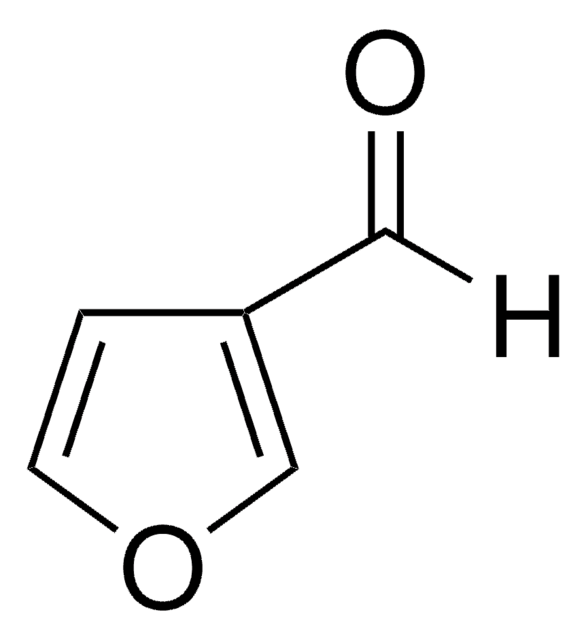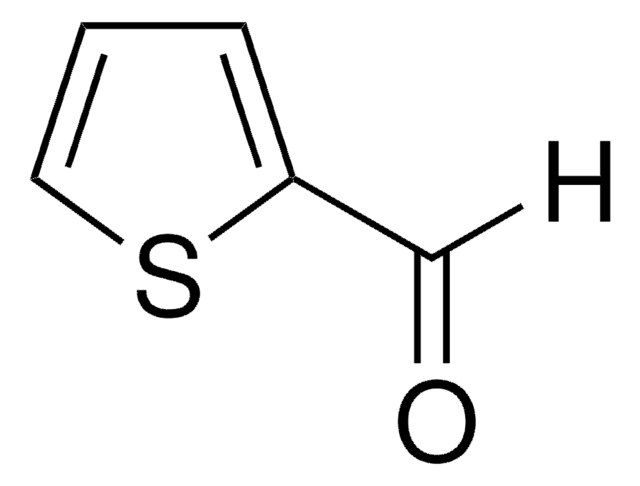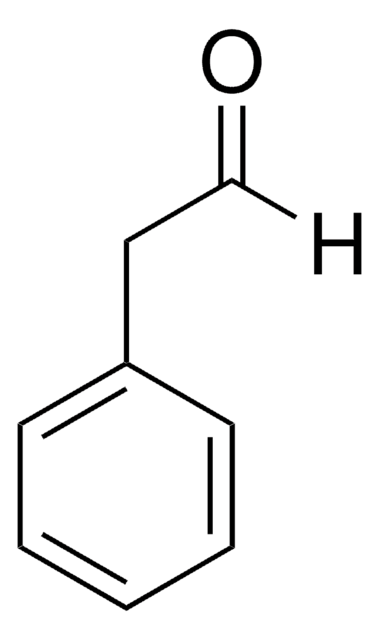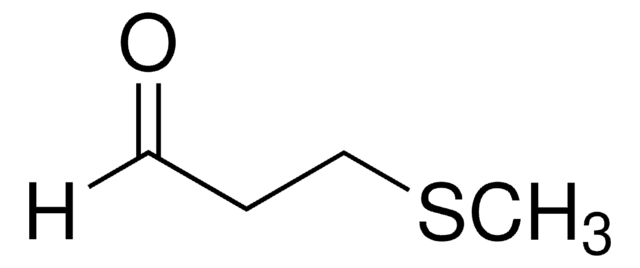318396
3-(Methylthio)-1-propanol
98%
Synonym(s):
Methionol
Sign Into View Organizational & Contract Pricing
All Photos(1)
About This Item
Linear Formula:
CH3S(CH2)3OH
CAS Number:
Molecular Weight:
106.19
EC Number:
MDL number:
UNSPSC Code:
12352100
PubChem Substance ID:
NACRES:
NA.22
Recommended Products
Quality Level
Assay
98%
form
liquid
refractive index
n20/D 1.49 (lit.)
bp
89-90 °C/13 mmHg (lit.)
density
1.03 g/mL at 25 °C (lit.)
functional group
hydroxyl
thioether
SMILES string
CSCCCO
InChI
1S/C4H10OS/c1-6-4-2-3-5/h5H,2-4H2,1H3
InChI key
CZUGFKJYCPYHHV-UHFFFAOYSA-N
Looking for similar products? Visit Product Comparison Guide
Application
3-(Methylthio)-1-propanol can be used as a reactant to prepare:
- Calix[4]arenes as amino acid chemosensors.
- Amphiphilic reactive oxygen species (ROS) sensitive diblock copolymers, applicable as nanocarriers for photodynamic therapy and chemotherapy.
- 3-(Methylsulfonyl)propyl thioacetate, which is used in the preparation of dipolar glass polymers for electronic and power applications.
Signal Word
Warning
Hazard Statements
Precautionary Statements
Hazard Classifications
Eye Irrit. 2 - Skin Irrit. 2 - STOT SE 3
Target Organs
Respiratory system
Storage Class Code
10 - Combustible liquids
WGK
WGK 3
Flash Point(F)
195.8 °F - closed cup
Flash Point(C)
91 °C - closed cup
Personal Protective Equipment
dust mask type N95 (US), Eyeshields, Gloves
Choose from one of the most recent versions:
Already Own This Product?
Find documentation for the products that you have recently purchased in the Document Library.
Synthesis of an oxidation-sensitive polyphosphoester bearing thioether group for triggered drug release
Wang J, et al.
Biomacromolecules, 20(4), 1740-1747 (2019)
Fabio Miazzi et al.
Chemical senses, 44(9), 673-682 (2019-09-11)
Insect odorant receptors (ORs) show a limited functional expression in various heterologous expression systems including insect and mammalian cells. This may be in part due to the absence of key components driving the release of these proteins from the endoplasmic
David A Camarena-Pozos et al.
Plant, cell & environment, 42(4), 1368-1380 (2018-11-01)
The plant microbiota can affect host fitness via the emission of microbial volatile organic compounds (mVOCs) that influence growth and development. However, evidence of these molecules and their effects in plants from arid ecosystems is limited. We screened the mVOCs
JianCai Zhu et al.
Journal of agricultural and food chemistry, 63(34), 7499-7510 (2015-08-11)
The aroma profile of oolong tea infusions (Dongdingwulong, DDWL; Tieguanyin, TGY; Dahongpao, DHP) were investigated in this study. Gas chromatography-olfactometry (GC-O) with the method of aroma intensity (AI) was employed to investigate the aroma-active compounds in tea infusions. The results
Enbo Xu et al.
Journal of food science, 80(7), C1476-C1489 (2015-06-20)
Enzymatic extrusion, instead of traditional steam cooking, to treat rice is an efficient and alternative pretreatment for Chinese rice wine fermentation. In order to determine the formation of volatiles in enzymatic extrusion-processed rice wine (EE), and to confirm its characteristic
Our team of scientists has experience in all areas of research including Life Science, Material Science, Chemical Synthesis, Chromatography, Analytical and many others.
Contact Technical Service








